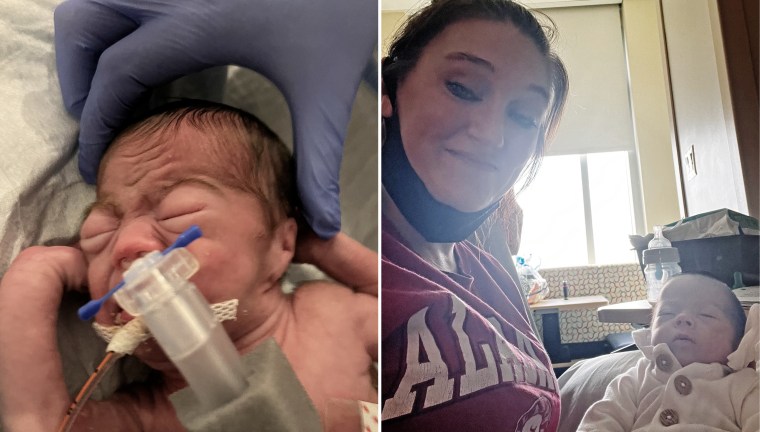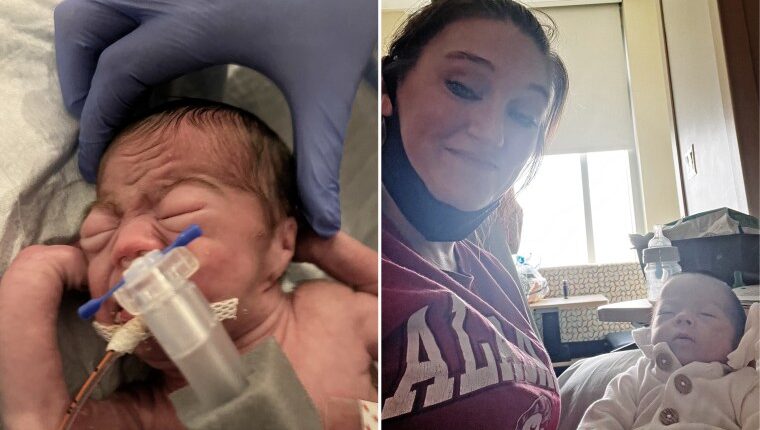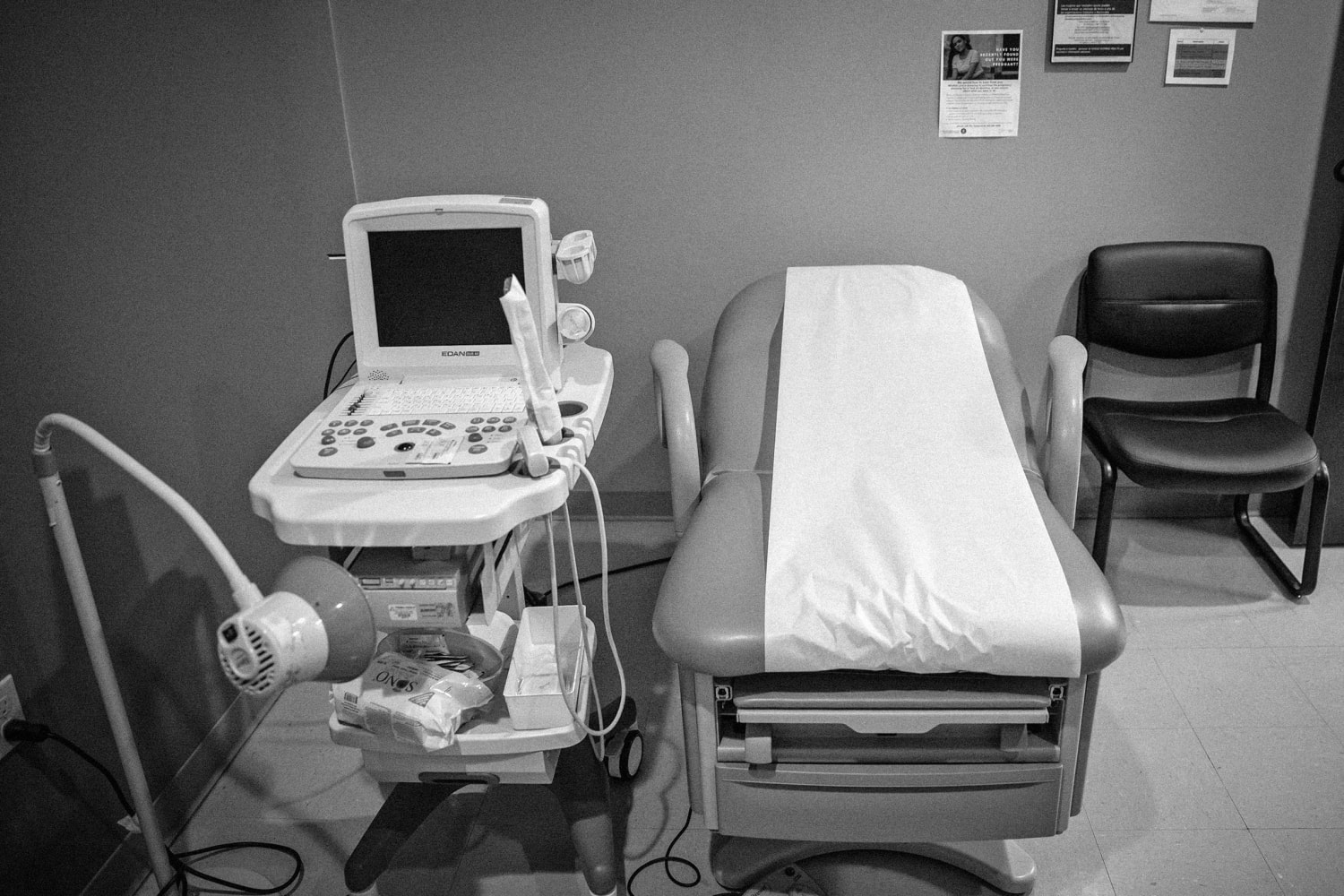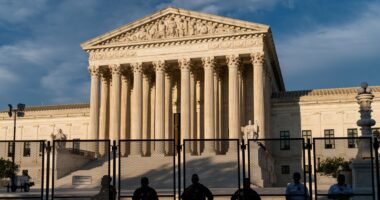The day Mayron Hollis discovered she was pregnant in spring 2022 was the same day doctors gave her terrible news: The pregnancy could be fatal to both her and her fetus.
Hollis had given birth to another child earlier in the year through cesarean section, and doctors were concerned she would experience a cesarean scar pregnancy — a rare type of ectopic pregnancy in which a fertilized egg implants and develops in the cesarean scar. It can cause fatal internal bleeding.
That left Hollis with a difficult choice: end the pregnancy or risk her own death and the fetus’.
“It is like Russian roulette,” Hollis said.
Hollis decided to seek an abortion. But by the time her appointment arrived in August, it was too late: She lived in Tennessee, and the state’s abortion ban had gone into effect, making the procedure a felony for the doctors involved. The law doesn’t offer exemptions for life-threatening pregnancies, though doctors can use the threat to the mother as a defense in criminal trials.
Hollis is among the 65 million women and girls of childbearing age in the U.S. who have been caught in the piecemeal landscape of abortion policy since the Supreme Court’s Dobbs v. Jackson decision removed federal abortion protections in June 2022. Since the ruling, more than one-quarter of states have banned abortion outright, and several more have severely restricted access.
For women and their families, abortion access is now largely a function of financial and geographic circumstances. For abortion-care providers, the year has brought influxes of out-of-state patients and a barrage of legal challenges. Abortion opponents, meanwhile, are enjoying their success. Some say they hope to see national restrictions.
Data around abortion access reveals an increasingly unequal health care system for women, in which those with the fewest resources are increasingly the least likely to be able to get abortions.
Distance and division
Abortion is outlawed — with few exceptions — in 13 states, with care also unavailable in Wisconsin, where there are no official abortion providers. Seven states restrict abortions based on the number of weeks a woman has been pregnant, with some bans coming as early as six weeks — before many women know they are pregnant. More than 28 million women of reproductive age live in states where abortion is banned, unavailable or restricted, with 2 million more in the two states where abortion is available but restrictions are pending.
Estimates from the Society of Family Planning — a nonprofit research organization focused on reproductive rights and abortion — suggest that the 13 states that instituted abortion bans had over 7,000 fewer abortions in the six months following Dobbs.
Bans and restrictions mean many women who do seek abortions have to travel long distances. Before Dobbs, less than 15% of reproductive-age women lived more than one hour’s drive from the nearest abortion facility, according to a study from researchers affiliated with Boston University, which compared population distribution with the locations of abortion clinics nationwide. By September — just three months after the Dobbs decision — that figure had more than doubled, to 33%.
The Boston University research found that the travel time impacts were particularly acute for women of color: The share of Black women farther than an hour’s drive from an abortion facility rose from 15% to 40%, and for Hispanic women the share increased from 8.6% to 30.3%.
Estimates from the Society of Family Planning indicate that over the first nine months after the Dobbs decision, more than 80,000 people who sought abortions in states where they are banned fully or after six weeks faced obstacles.
Women who get abortions are typically in their 20s and already have children, according to the Guttmacher Institute, a research-focused nonprofit organization that supports abortion rights. Nearly half live under the poverty line.
“This is an inequality and poverty story,” said Caitlin Myers, an economics professor at Middlebury College who researches reproductive policy. Her work includes a study that found that mandatory waiting periods disproportionately affected young women and women of color.
Myers said that often, those who carry babies to term that they would otherwise have terminated are “the poorest, most vulnerable of an already poor and vulnerable population.”
In total, the Society of Family Planning’s estimates suggest that more than 25,000 women were unable to get abortions from July to March. Many were unable to overcome financial and logistical barriers, including travel, child care or insurance policies that don’t cover abortions out-of-state the same way they might in-state.
“People who get trapped are often poor women who aren’t employed who are shift workers who don’t have benefits,” Myers said.
After Tennessee’s abortion ban took effect on Aug. 25, Hollis learned her abortion had been canceled.
“I got the call on August 26, on my birthday, that there was not going to be a surgery,” she said. “It was excruciating the day I got the news.”
Then, 25 weeks into her pregnancy, Hollis began bleeding uncontrollably, lapsing in and out of consciousness. Her daughter Elayna was born 14 weeks premature and still struggles with an array of health problems. Hollis required a hysterectomy.

Protections and refuge
Many states have instituted abortion protections in the wake of the Dobbs decision. Voters in Vermont, California and Michigan enshrined abortion rights in their state constitutions during the midterm elections. Minnesota codified abortion rights into law in January. Voters in Kentucky, meanwhile, rejected an effort to amend the state constitution to explicitly say there is no right to abortion.
The flurry of protections made such states havens for abortion seekers. Survey data from the Society of Family Planning shows abortion rates rising after Dobbs in Illinois, Minnesota, Nevada, Maryland and other states.
“Providers on the front lines receiving patients from banned states are mostly overwhelmed,” Myers said. For example, she said that in Kansas, it’s typical for none of the state’s providers to have available appointments within two to three weeks.
Dr. Raegan McDonald-Mosley, a Maryland obstetrician, said many of her patients aren’t from the state.
“I’ve seen a lot of patients that are having to travel significant distances from out of state,” said McDonald-Mosley, who is the CEO of the nonprofit abortion advocacy group Power to Decide. “I’ve seen patients from Wisconsin, from Texas.”
The patients who worry McDonald-Mosley the most, she said, are the ones she doesn’t see because they are stymied by obstacles similar to what Hollis faced.
The fights ahead
Hey Jane, which operates virtual clinics that provide patients with medication abortions, said the number of patients it has treated has more than doubled since the Dobbs decision. In Illinois, its post-Dobbs numbers quadrupled.
Medication abortion accounted for more than half of all U.S. abortions in 2020, according to the Guttmacher Institute. The regimen involves a combination of two drugs, mifespristone and misoprostol, to terminate pregnancies up to 10 weeks. Currently, access to medication abortion is legal in some way in 36 states and Washington, D.C.
However, a lawsuit seeking to upend the Food and Drug Administration’s longtime approval of mifepristone is being considered by a federal court and is likely to head to the Supreme Court.
The momentum is undeniable, leaders of anti-abortion groups say.
“There’s a sense of relief, because our hands are no longer tied,” said Carol Tobias, the president of National Right to Life. “We would pass legislation we thought was helpful to moms and babies, and the abortion industry would take it to court, where it would be struck — now we have a chance.”
However, Tobias said, activists must continue to defend anti-abortion laws against legal challenges and legislative changes.
Kelsey Pritchard, the director of state public affairs at Susan B. Anthony Pro-Life America, said her group hopes for a nationwide abortion ban after 15 weeks’ gestation.
“We’re happy with the progress that we’ve made in just one year alone. But we’re not satisfied with where we’re at as far as an endpoint,” Pritchard said. “We’re not done. We’re not even close to done.”
Other groups continue to work at the local level.
Brian Westbrook, the executive director and founder of Coalition Life, an anti-abortion group that intervenes in front of abortion clinics in Missouri and Illinois, said a “cultural shift” on the issue is the group’s “first and foremost goal,” adding that anti-abortion “laws will certainly follow.”
In Tennessee, Hollis said she is grateful for her daughters, despite continued complications.
Her daughter Elayna was born weighing 1 pound, 12 ounces, far below the 7 pounds of a typical full-term baby. Today, at 6 months old, she is still on oxygen and a feeding tube.
That has strained the Hollis family’s finances. “We maxed out credit cards,” Hollis said. “We had a business, but with Elayna in the ICU, it got really bad, and I couldn’t afford to drive back and forth, so I had to sleep in my car. Some days I would take a shower at Planet Fitness.”
“God made happen what was supposed to happen,” Hollis said. “But I should’ve been able to have that choice.”
Source: | This article originally belongs to Nbcnews.com









